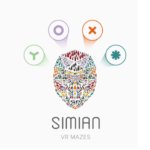$540.00 – $2,890.00
10% off with your subscription Membership


Specifications
The Open Field Test is a popular protocol used to assess exploratory behavior and anxiety. Thigmotaxis in the open field is used to evaluate anxiolytic, anxiogenic, and even non-pharmacological treatments. Ambulation is the most common behavior studied with this maze, but others such as latency or rearing can also be measured. In addition, objects can be added for a modification similar to the novel object recognition field.
The Open Field apparatus is a square arena that is available in a 27 x 27 cm and 50 x 50 cm sizes to accommodate different sized animals. The arena is surrounded by high walls to prevent the subjects from escaping the apparatus. In general, the walls are clear. However, opaque colors and matte finish are also available. Floor inserts for the apparatus are available with or without gridlines. These gridlines divide the area into equal smaller squares and can be helpful for both manual scoring, as well as video recording and scoring with tracking software. A square area in the very center of the area may also be outlined.
| Dimensions | N/A |
|---|---|
| Size | Rat, XS, Mouse (Set of 4), Rat (Set of 4), XS (Set of 4), Mouse |
| Brand | MazeEngineers |
You must be logged in to post a review.
DISCLAIMER: ConductScience and affiliate products are NOT designed for human consumption, testing, or clinical utilization. They are designed for pre-clinical utilization only. Customers purchasing apparatus for the purposes of scientific research or veterinary care affirm adherence to applicable regulatory bodies for the country in which their research or care is conducted.

Reviews
There are no reviews yet.